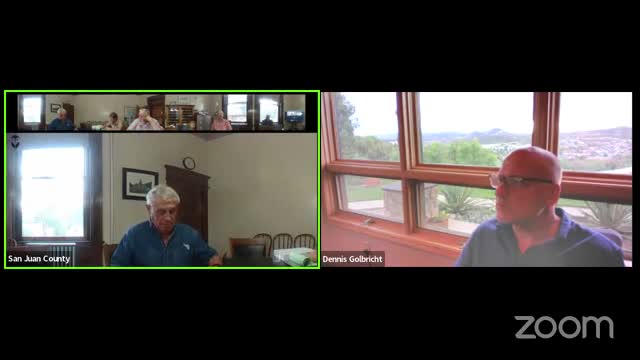Groundwater Contamination Sparks Urgent Cleanup Debate
June 27, 2024 | San Juan County, Colorado

This article was created by AI summarizing key points discussed. AI makes mistakes, so for full details and context, please refer to the video of the full meeting. Please report any errors so we can fix them. Report an error »

In a recent government meeting, officials discussed significant concerns regarding groundwater contamination at the Huddersville Terrace Farm, particularly the presence of metals, including zinc, in the area. The discussions highlighted the need for further investigation into how these contaminants might affect the nearby river and the overall watershed.
Participants noted that while some cleanup efforts have been made, including the removal of tailings by Sunnyside, there remains uncertainty about the effectiveness of these actions. The meeting underscored the importance of obtaining comprehensive data on the extent of contamination and the volume of tailings present, with estimates ranging from 300,000 to 500,000 cubic yards.
The Environmental Protection Agency (EPA) has indicated that tailings in the groundwater are contributing to the contamination, and officials are considering various remediation strategies. One proposed solution involves creating a reactive barrier downstream of the contaminated pond, which could cost approximately $4 million over the next decade. However, a more extensive option to remove the tailings entirely could reach up to $100 million, a figure that many attendees deemed impractical.
Concerns were raised about the adequacy of current monitoring efforts, with calls for more drilling and sampling to better understand the contamination's scope. The meeting also touched on the historical context of the contamination, with references to past cleanup efforts and the need for transparency regarding the effectiveness of these initiatives.
Overall, the discussions reflected a pressing need for detailed data and a clear plan moving forward to address the contamination issues at Huddersville Terrace Farm and protect the surrounding environment.
Participants noted that while some cleanup efforts have been made, including the removal of tailings by Sunnyside, there remains uncertainty about the effectiveness of these actions. The meeting underscored the importance of obtaining comprehensive data on the extent of contamination and the volume of tailings present, with estimates ranging from 300,000 to 500,000 cubic yards.
The Environmental Protection Agency (EPA) has indicated that tailings in the groundwater are contributing to the contamination, and officials are considering various remediation strategies. One proposed solution involves creating a reactive barrier downstream of the contaminated pond, which could cost approximately $4 million over the next decade. However, a more extensive option to remove the tailings entirely could reach up to $100 million, a figure that many attendees deemed impractical.
Concerns were raised about the adequacy of current monitoring efforts, with calls for more drilling and sampling to better understand the contamination's scope. The meeting also touched on the historical context of the contamination, with references to past cleanup efforts and the need for transparency regarding the effectiveness of these initiatives.
Overall, the discussions reflected a pressing need for detailed data and a clear plan moving forward to address the contamination issues at Huddersville Terrace Farm and protect the surrounding environment.
View full meeting
This article is based on a recent meeting—watch the full video and explore the complete transcript for deeper insights into the discussion.
View full meeting
